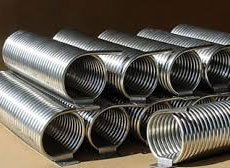Coil tubing is a common component of HVAC, industrial, and commercial systems. While it might seem like a simple solution to corrosion issues in these types of systems, the truth is that stainless coil tubing has several differences when compared with more conventional metal tube solutions. Understanding these differences will help ensure that the right tubing is chosen for each specific application, preventing corrosion and other problems down the line.
The main difference between tubes and pipes is that tubes can be shaped into different shapes, while pipes cannot. This allows tubes to be used in a variety of applications that would not be possible with pipes, such as the manufacture of aircraft, cars, medical equipment, and more. Pipes, on the other hand, are typically round and are only available in certain diameters. Pipes are also much thicker than tubes, meaning they can be stronger and more rigid in construction.
Both tubes and pipes can be made of various materials, but the most common are steel, nickel-based alloys, or copper-based alloys. Stainless steel is one of the most common of these, and it can be found in many industries for its durability and strength. It can be made even more resistant to corrosion by the addition of molybdenum, which increases the level of corrosion resistance to the point that it can withstand harsh environments. Stainless steel coil tubing is made of this type of stainless steel, and it is commonly used in marine applications on ships, offshore rigs, and surgical equipment.
Stainless steel coil tubing can be manufactured into long lengths for use in a variety of applications. For example, coiled tubing can be used for drilling and well control in oil and gas drilling operations. Its continuous length reduces the need for fittings that might leak or change the dimensions of the tubing, increasing efficiency and lowering installation costs. Its ability to withstand high pressures and temperatures also improves reliability by reducing the risk of costly or catastrophic gas leaks.
The manufacturing process for stainless coil tubing is similar to that of welded stick tubing, except that it is cold drawn into its coil shape. This removes the need for welding, which can weaken the material and create leak points. When correctly installed, coiled stainless tubing can offer long-length solutions for industrial, geothermal, and petrochemical applications without the need for joining fittings.
When it comes to installing coiled tubing, it is important to take the time to prepare the tubing properly and ensure that the installers are using the appropriate tools and techniques. This will help prevent kinking and deformation, which can result in the need for repairs or replacements that can increase cost and reduce system performance. In addition, it is important to make sure the installers are utilizing proper supports and anchoring to minimize stress and vibration. By following these simple tips, the installation of stainless coiled tubing can be an efficient, reliable process that will not lead to future maintenance and repair issues.





Comments